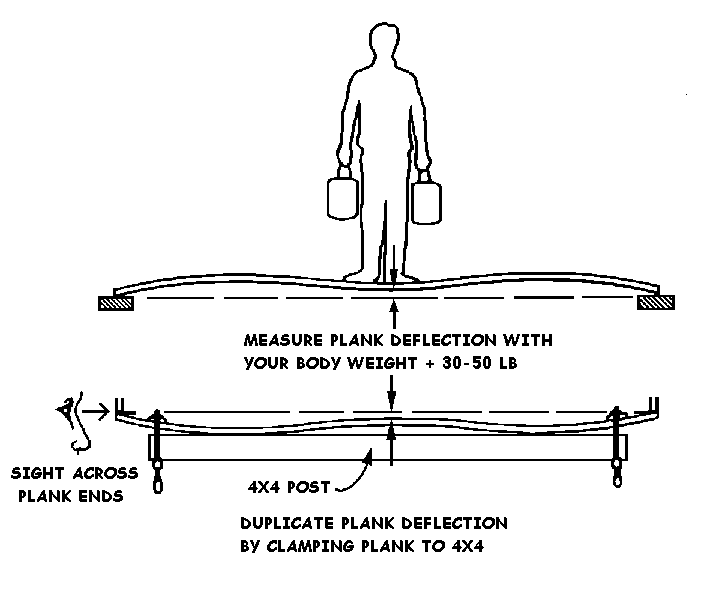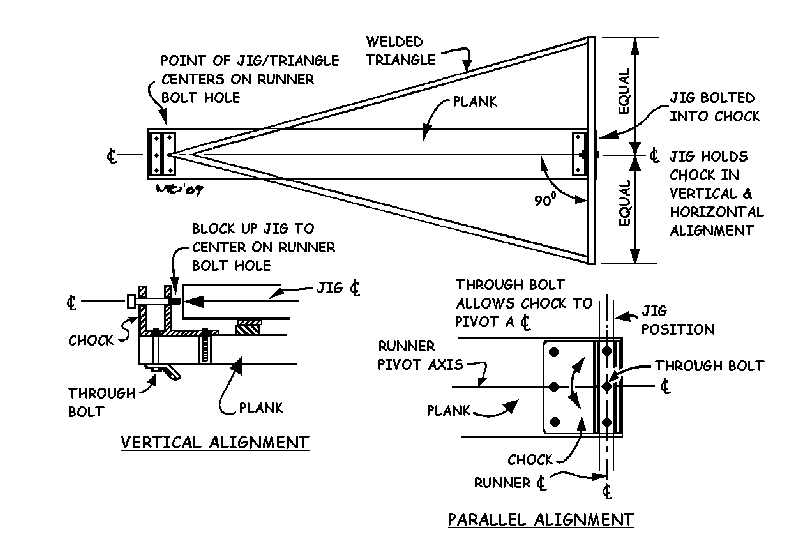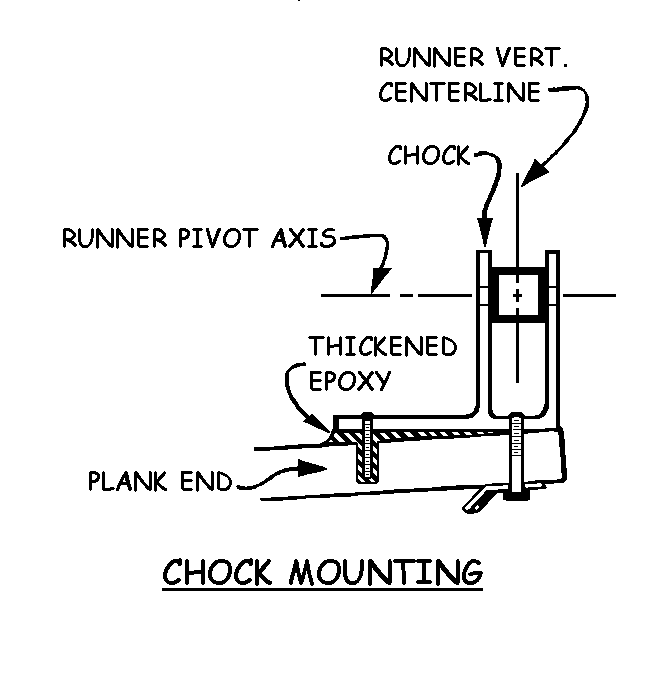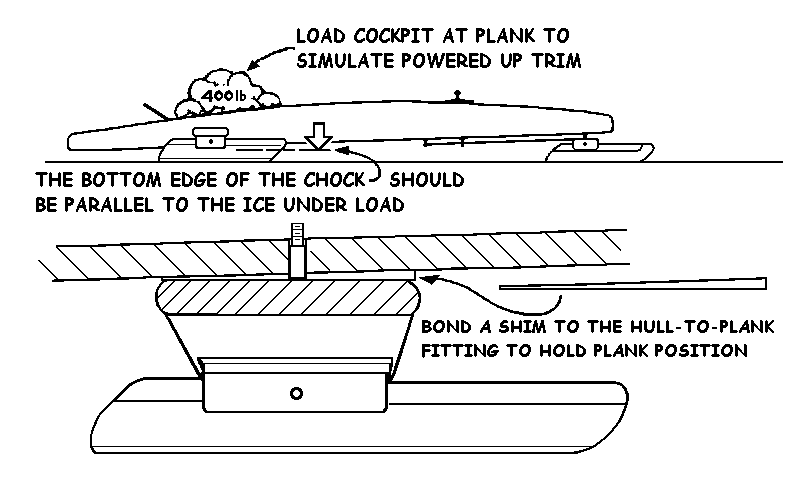Iceboat Runner Blades
3 steps to help you get the most out of yours this season
by Jan C Gougeon
|
Iceboat nuts agree: when you increase the speed of your DN
Iceboat, there is a snowball effect on the amount of fun to be had during the
chilly winter season. If you want a faster, more enjoyable sail out of your
DN, it is very important to get the runner blades parallel to each other.
Proper alignment requires a little extra work, but can mean the difference
between first and second place in this season's DN iceboat races. Here's how
we do it in the icy Step 1
|

|
There are different methods of lining up the chocks to make them parallel. We use the triangle method. A jig, made of three pieces of 1" square steel or aluminum tubing, is welded together in the shape of an equilateral triangle. The base of the triangle (about 4' long), bolts into the runner chock. (A 1" section will fit into the runner chock, just like a runner.) The two equal length sides of the triangle (a little over 8’ long) should come to a sharp point at the peak and almost touch the chock on the opposite end of the plank. The point should fall on a centerline that bisects the triangle equally, and is exactly perpendicular to the base. Drill a hole through the middle of the base tube in line with the perpendicular centerline for attachment to the chock. (Lay it out on the floor to get it perfect.) Dry-fit the chocks in position. One through-bolt holds the tang for the shroud on top of the plank, passes through the plank, and then threads into the middle outer hole of the chock. One-inch Allen head set screws are threaded into the other five holes in the chock. The through-bolt hole in the runner plank is drilled to size. The holes for the set screws are drilled slightly deeper than the screw length, and oversized to allow for adjustment and better bonding. A 7/16" hole will do. The chock should be able to pivot slightly around the through-bolt. After the plank, jig and chocks have been prepared, wet out the holes and the surface of the plank under the area of one of the chocks with WEST SYSTEM epoxy. Follow with a generous amount of epoxy/406 Colloidal Silica mixture. Carefully place the chock on the plank end with the triangle-jig bolted firmly in place. Align the triangle point with the center of the runner bolt hole in the opposite chock. Shim the triangle point so that it rests with the center of the 1" tubing even with the center of the hole. |

|
Epoxy should squeeze out everywhere. With the chock tightened down on the triangle, and the triangle end centered in both front and top view on the opposite runner bolt hole, the chock will be correctly positioned from both front and top views. Note that the inner edge of the chock may be slightly raised. Clean off excess epoxy, and allow the epoxy to cure thoroughly with the chock in this position. |

|
After the epoxy cures, mount the other chock in the same manner and allow to cure thoroughly before proceeding. NOTE: Do not turn the aluminum triangle over. Mark the surface that is up
and always keep it up. This way, even if there is an error in the triangle,
the chocks will still be parallel to each other. Step 2
|

|
These steps will help you to get the most out of your runners under the widest range of sailing conditions. Note: This article is from the Fall 1989 edition of The Boatbuilder (Number 27). The Boatbuilder is published by Gougeon Brothers Inc. updated |
back to Articles